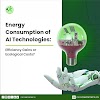The term 'Plastic' has become a ubiquitous material and a global phenomenon in our world today.
Literarily, plastic is seen and used in every blink of an eye. But, despite its convenience and affordability, plastic has caused significant adverse effects on our environment and health. From polluting our oceans to contaminating our food chain. Its non-biodegradable nature and leaching of harmful chemicals have led to severe consequences.
Hence, the urgent need to address the adverse effects of plastic for the sake of our planet and our well-being.
But before we dive deep into the subject, let's start by knowing the meaning of the term 'Plastic'. Plastic is a synthetic material made from polymers, which are large molecules composed of repeating units called monomers.
This versatile material can be molded and shaped into various forms, offering properties like durability, flexibility, and resistance to moisture. Plastics are used in numerous industries and applications, but their non-biodegradable nature poses both environmental and health challenges.
Now, these challenges are numerous but for easier understanding, this article uses the categorisation below:
- Environmental Impact
Plastic pollution has become a global crisis, posing serious threats to our ecosystems, as discussed below:
I. Marine Pollution: Every year, millions of metric tons of plastic waste end up in the oceans, causing harm to marine life. It is estimated that there will be more plastic than fish in the ocean by 2050 if current trends continue.
II. Microplastics: Plastic breaks down into smaller fragments known as microplastics, which are now pervasive in our environment. They are found in oceans, rivers, soil, and even the air we breathe. According to a study, the average person could be ingesting and inhaling around 5 grams of microplastics each week, equivalent to the weight of a credit card.
III. Landfills: Plastics are not biodegradable and can persist in landfills for hundreds of years. They occupy valuable land space and contribute to the emission of greenhouse gases as they degrade.
- Health Effects
Aside from the environmental effects, Plastic pollution also has potential health implications for both humans and animals. This is discussed below:
I. Chemical Leaching: Certain chemicals present in plastics, such as bisphenol A (BPA) and phthalates, can leach into food, beverages, and the environment. These chemicals are known to disrupt hormonal balance and have been associated with reproductive disorders, developmental issues, and certain types of cancers.
II. Contaminated Food Chain: Animals, especially marine species, can mistakenly consume plastic debris, leading to physical harm and the potential transfer of toxins up the food chain. This can ultimately impact human health when consuming contaminated seafood.
III. Air Pollution: The incineration of plastic waste releases toxic pollutants into the air, including dioxins and furans, which are known to be carcinogenic and harmful to respiratory health.
The plastic problem won't disappear by itself. It's time to take action and find innovative solutions to tackle this global challenge.
— Plastic Oceans International.
Like David Attenborough said, "Plastic pollution is not someone else's problem. It's a problem we all share, and it's up to all of us to find a solution".
Plastic Pollution is not about perfect environmentalists but rather, the small steps we take as individuals to create a big impact.
Stay with us through this month, as we discuss the problem of plastics and how to beat Plastic Pollution.
— Funbi Ransome-Ige



.jpeg)













0 Comments